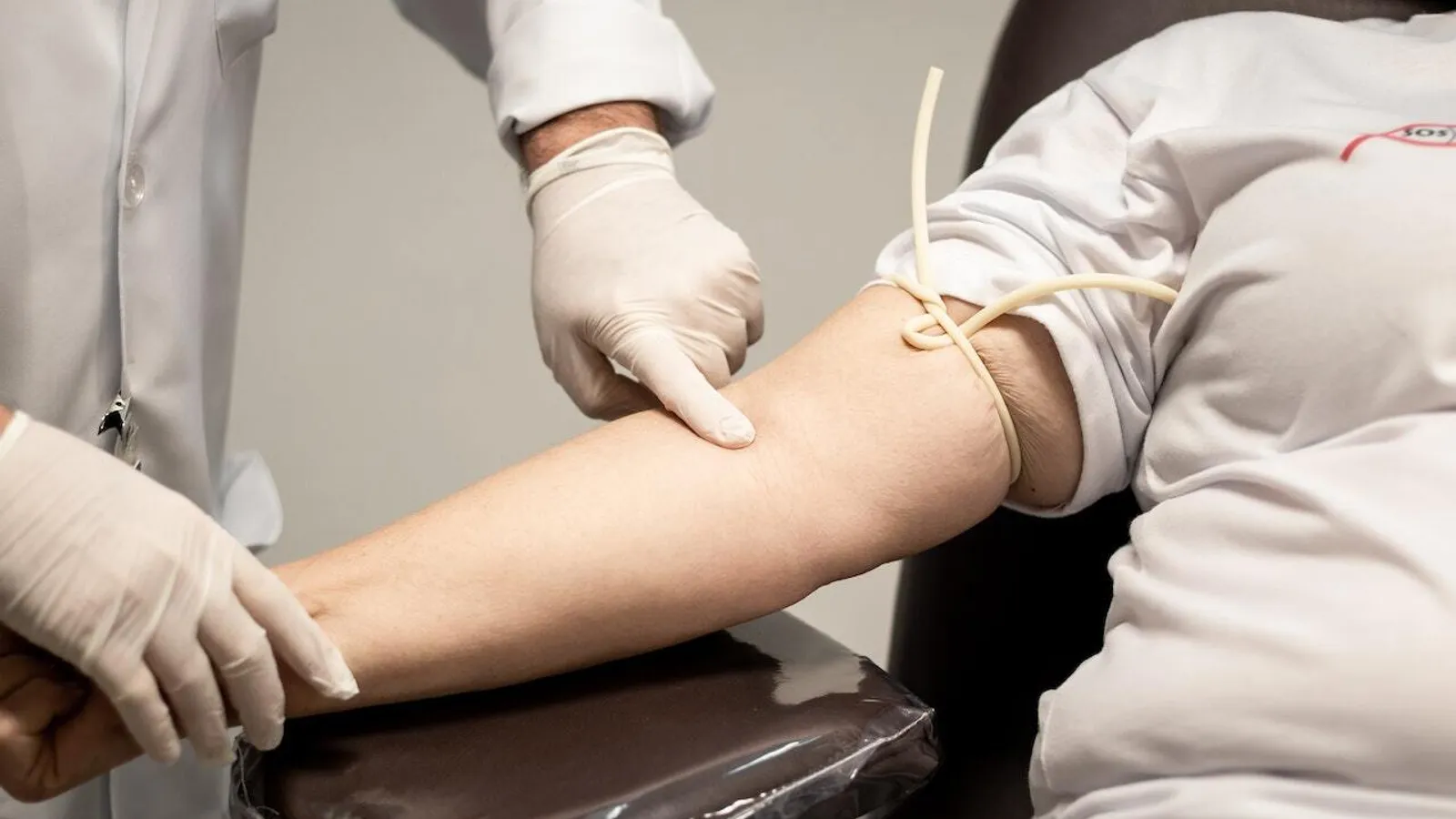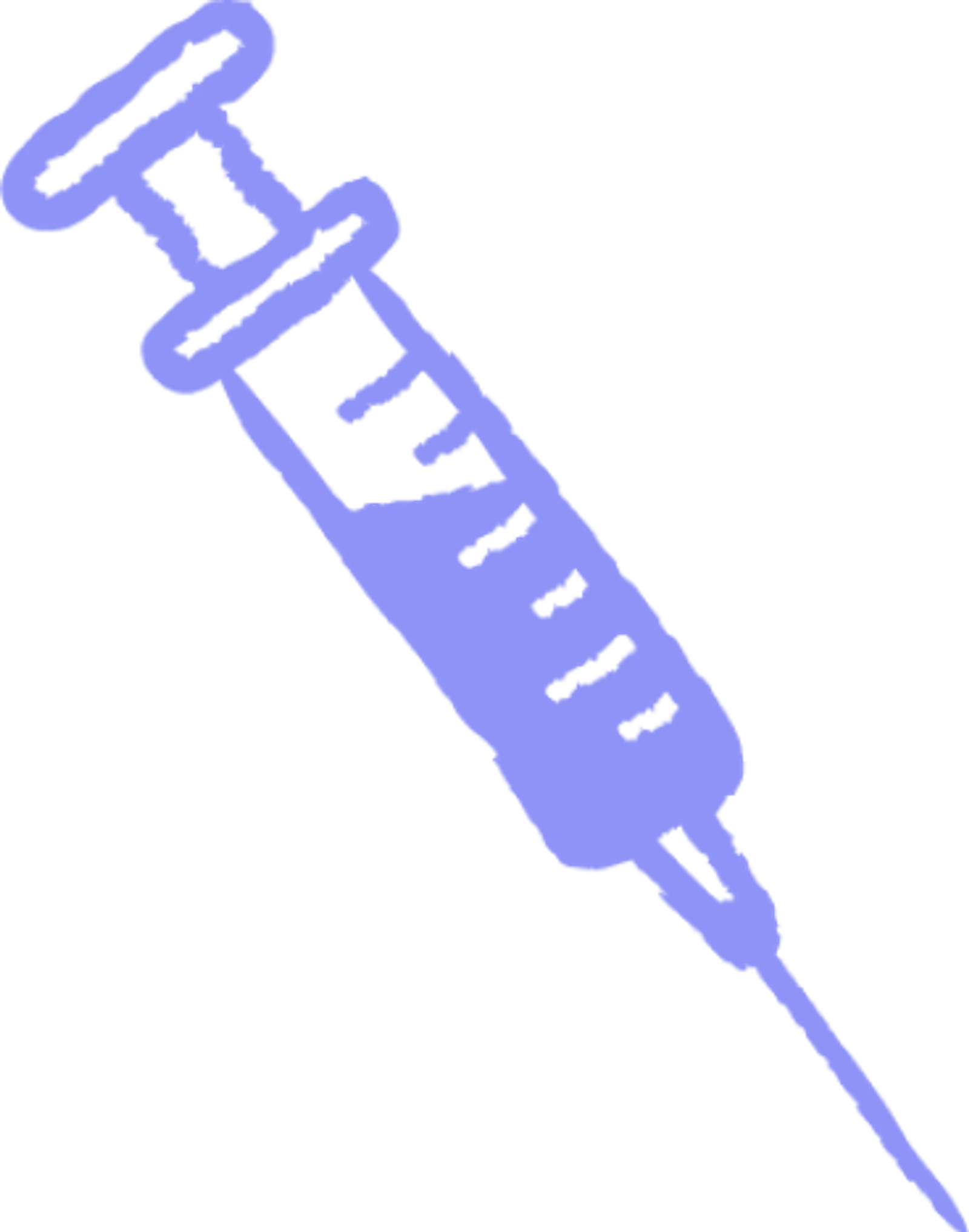Plasma 101
Who: Eligible donors between 18 and 64 can earn up to $560 a month in NY and up to $770 a month in FL.
What: Plasma is the yellow part of your blood that replenishes naturally.
Where: Queens, Brooklyn, The Bronx (NY), and Ft. Pierce (FL).
Why: Get paid to donate and help treat bleeding disorders, immune deficiencies, and more.
When: No appointment needed—walk in anytime before closing.
Giving Life through Plasma Donation

Giving Life through Plasma Donation
Blood plasma is a remarkable, life-sustaining fluid that transports critical proteins, nutrients and medicines through the body. This post clearly explains plasma's vital composition and functions, highlights inspirational stories of donors and recipients, and provides actionable details on donation eligibility and processes. Read on to discover how simple plasma donations save lives every day and empower readers to become the next plasma hero!
Plasma donations are safe and help provide life-saving transfusions and treatments. Two-thirds of plasma is water, one-quarter proteins vital for immunity, clotting, and bodily functions. Plasma saves crash victims, trauma patients, transplant receivers and helps treat bleeding disorders, neurological conditions, immune deficiencies. Donating plasma is safe and easy with approval.
The Composition and Functions of Blood Plasma:
Aspect | Details |
Composition | 92% water, 8% vital proteins (albumins, globulins, fibrinogen), glucose, clotting factors, electrolytes, hormones |
Albumins | Regulate blood volume and pressure; transport hormones, vitamins, waste products |
Globulins | Key in immune function; include antibodies targeting bacteria, viruses, and foreign substances |
Fibrinogen | Essential for blood clot formation |
Additional Components | Dissolved ions (sodium, potassium, calcium), glucose, fats, hormones, gases (oxygen, carbon dioxide) |
Transport Function | Carries proteins, glucose, hormones, vitamins, minerals, waste products, oxygen; removes carbon dioxide |
Immune Defense | Transports immunoglobulins (antibodies) and immune cells |
Blood Pressure/Volume | Plasma proteins control blood volume and pressure |
Clotting | Activates coagulation factors like fibrin in response to vascular injury |
pH Balance | Maintains optimal blood pH for cellular functions |
The Composition and Function of Blood Plasma
Understanding Plasma Composition
Blood plasma is composed primarily of water, making up about 92% of its content. The remaining 8% contains vital proteins like albumins, globulins and fibrinogen as well as glucose, clotting factors, electrolytes and hormones.
Albumins attract and bind water, helping to regulate blood volume and pressure. They also transport hormones, vitamins and waste products.
Globulins play a key role in immune function. They include antibodies that target invading bacteria, viruses and other foreign substances.
Fibrinogen is essential for blood clot formation, quickly forming a mesh when blood vessels are damaged to stop bleeding.
In addition to proteins, plasma contains dissolved ions like sodium, potassium and calcium which are important for cellular function. Glucose, fats, hormones and gases like oxygen and carbon dioxide are also transported by plasma around the body.
The Vital Roles of Blood Plasma
As the liquid component of blood, plasma serves many crucial functions:
Transport - Plasma carries proteins, glucose, hormones, vitamins, minerals, waste products and oxygen to tissues while taking carbon dioxide away for removal. This keeps cells nourished and removes metabolic waste.
Immune Defense - Plasma proteins called immunoglobulins, or antibodies, bind to bacteria and viruses, disabling them and preparing them for destruction. Plasma also transports immune cells throughout the body.
Blood Pressure/Volume Regulation - Plasma proteins attract and retain fluid in the bloodstream, controlling both overall blood volume and pressure. Insufficient plasma proteins can lead to edema or uncontrolled bleeding.
Clotting - In response to vascular injury, coagulation factors like fibrin are activated in plasma. Fibrin forms a clot with platelets that stops bleeding and allows healing factors found in plasma to repair damage.
pH Balance - Buffer chemicals in plasma resist shifts in blood pH, maintaining the slightly basic pH optimal for cellular functions. Outside this narrow pH range can greatly impact tissues and organ systems.
Plasma may seem like simple fluid, but it quietly keeps your vascular system balanced, supplies tissues with nutrients and protection, and steps forward to stop bleeding when you are injured. The body can’t maintain homeostasis without all that plasma accomplishes each day.
The Impact and Process of Plasma Donation:
Aspect | Details |
Life-Saving Role | Stabilizes patients in trauma, burns, shock, uncontrolled bleeding; helps in clot formation |
Processing | Undergoes testing and processing for emergency transfusion, immune-boosting therapy, clotting factor medicine |
Chronic Conditions | Benefits patients with chronic immunologic, neurologic, hematologic conditions |
Plasma Exchange | Removes autoantibodies in autoimmune disorders; improves nerve signaling and function |
IVIG for immune deficiencies/autoimmune conditions; clotting factor concentrates for bleeding disorders | |
Donor Eligibility | Ages 18-65, minimum weight 110 pounds; health history review; no bleeding disorders, HIV, uncontrolled diabetes/hypertension |
Donation Process | Plasmapheresis: separates and collects plasma, returns other blood components; 500-800 ml per session |
Frequency of Donation | Up to twice per 7-day period, allowing recovery time |
Safety and Comfort | FDA guidelines followed; minimal discomfort compared to traditional blood donation |

The Impact of Plasma Donation
Saving Lives through Plasma Donation
Donated plasma plays a crucial, life-saving role across emergency and critical care medicine. When trauma, burns, shock or uncontrolled bleeding occurs, transfusions of type AB plasma can help stabilize patients, replacing vital fluid and proteins lost in the crisis. Plasma also helps clotting factors form clots effectively to stop hemorrhage.
After donation, plasma goes through rigorous testing and processing to create freeze-dried powders convenient for reconstitution and use when seconds count. Plasma donation gives trauma centers, ambulances and military medics the capacity to rapidly transfuse patients without needing to match blood types in dire emergencies.
Plasma-derived therapies also treat deficiencies in coagulation factors essential for normal clotting. These deficiencies can lead to chronic uncontrolled bleeding or excessive clotting throughout the body. Transfusions of plasma containing the deficient factor helps reestablish balance in the complicated clotting cascade.
Plasma Donation and Chronic Conditions
Beyond its indispensable role in emergency and critical care medicine, plasma donation also greatly benefits those suffering from chronic immunologic, neurologic and hematologic conditions.
Plasma exchange helps remove destructive autoantibodies attacking organs and tissues in autoimmune disorders like Guillain-Barre syndrome, myasthenia gravis and chronic inflammatory demyelinating polyneuropathy (CIDP). Removing these autoantibodies can dramatically improve nerve signaling and function.
In other cases, plasma components themselves are used as therapies. Intravenous immunoglobulin (IVIG) concentrated from donated plasma contains diverse antibodies that modulate runaway inflammation and immune destruction. IVIG treats immune deficiencies and is effective in certain autoimmune conditions like Kawasaki disease, immune thrombocytopenia and multifocal motor neuropathy.
Clotting factor concentrates are also purified from donated plasma to treat bleeding disorders like hemophilia A and von Willebrand disease. These patients lack the ability to form stable clots and suffer from chronic joint bleeding or life-threatening internal hemorrhage without plasma factor replacement multiple times a week.
Thanks to committed plasma donors, great progress has been made in managing once untreatable and fatal chronic immunologic and hematologic diseases. Patients now have a much brighter outlook and improved quality of life due to plasma-based medical interventions.
The healthcare field still struggles to fully understand or effectively treat many chronic, complex conditions rooted in immune, vascular, genetic or metabolic abnormalities. Expanding knowledge of how aberrant processes lead to disease will open up new possibilities for plasma-derived therapies in the future. Dedicated plasma donors ensure that raw material will be available as medicine advances.
Plasma Donation Stories
Personal Experiences of Donors and Recipients
Plasma donors and recipients have amazing, emotional stories to tell about how this vital donation impacts lives.
Andrew, an avid mountain biker, first donated plasma in college when money was tight. “It was an easy way to earn extra income between classes and trail rides. I felt good knowing my plasma might help someone in an emergency.”
Years later while competing in a downhill race, Andrew lost control and suffered life-threatening injuries. “I coded twice due to massive blood loss before they stabilized me,” he recalls. Andrew required many plasma transfusions as doctors worked to save his splintered femur and repair organ lacerations. “I never dreamed I’d end up being the recipient years after donating! Plasma I donated might’ve even been what was transfused into me.”
Plasma transfusions kept Andrew alive so he could eventually walk again and return to the trails he loves. He now organizes annual charity rides to benefit plasma donation centers. “I owe plasma donors my life. I want to make sure they know how thankful patients like me are for their selfless donations.”
Maggie was born with a rare, genetic bleeding disorder that left her at risk of uncontrolled hemorrhaging. Her parents received the devastating diagnosis when Maggie was just a toddler. “It was terrifying knowing that a small fall or bump could threaten Maggie’s life,” her mother Jessica shares.
To prevent bleeds, Maggie receives regular infusions of a plasma clotting protein she lacks. “Now Maggie is an active, happy 8-year old,” says Jessica. “She loves to swim, which would’ve been impossible without plasma treatments. We’re so grateful to all those who take time to donate so children like Maggie can have full, healthy childhoods.”
The Journey of Plasma from Donation to Treatment
When plasma donors selflessly take time to give blood, they launch a complex, high-tech journey putting their plasma on course to save lives.
Donated whole blood is transported to separation facilities where it spins in large centrifuges optimized to isolate out the precious, golden fluid that is plasma. The remaining red blood cells and platelets go on to also help patients in need.
Plasma then undergoes rigorous testing and purification processes tailored for its ultimate use - whether an emergency transfusion, immune-boosting therapy or clotting factor medicine. It may be frozen at extremely low temperatures for years-long storage to stand ready when disaster strikes. Or specialty proteins are carefully filtered out to treat chronic conditions.
Wherever the need, donated plasma completes its journey by arriving at hospitals, infusion centers and emergency medical services equipped to handle this fragile, life-sustaining biofluid. Far from its humble beginnings traversing the takeout-filled backseat of someone’s car on the way to the plasma center, plasma assumes an almost magical, superhero-like status as it ultimately rushes into battle against both acute and chronic villainous disease.
Of course, this life-saving plasma owes its entire existence to everyday people willing to endure a needle stick to help their fellow humans. Donors should glow with pride knowing they are the integral force behind plasma’s crime-fighting crusade! Their small sacrifice sets in motion an intricate process culminating in the improved length and quality of life for recipients battling illness and trauma.

How You Can Donate Plasma
Eligibility and Preparation for Plasma Donation
Donating life-saving plasma is easy and rewarding. Here’s what you need to know in terms of plasma donation eligibility when it comes to contributing.
You must be 18-65 years old and weigh at least 110 pounds to donate plasma. Teens age 16 or 17 need parental permission. Medications and health history are reviewed to ensure donation is safe for you and recipients. You cannot donate if you have bleeding disorders, HIV, uncontrolled diabetes/hypertension, or feel unwell.
There are do’s and don’t’s to plasma donation! Eat a hearty meal before donating and stay well hydrated by drinking extra fluids like water or juice the day before and morning of. This helps replace the fluid lost during donation. Avoid fatty foods which can interfere with plasma collection.
Get good sleep, avoid alcohol for 12 hours and do not smoke/vape prior for maximum comfort and safety.
To allow time for registration, health screening and donation, plan 2 hours for first visits and 90 minutes for subsequent donations. Bring an ID, proof of address and Social Security number to enroll.
Consider saving lives with plasma donation at an Olgam Life center! Our friendly staff provide an exceptional donor experience.
The Plasma Donation Process
Donating plasma through an automated procedure called plasmapheresis is straightforward:
You first complete a confidential pre-screening interview regarding health/lifestyle to ensure safety. Your protein, iron levels and vitals are also checked.
If eligible, a nurse then cleanses your arm and inserts a sterile needle into your vein to access blood flow. The needle feels like a quick pinprick. Your blood goes through an automated machine that separates and collects plasma, then returns red blood cells and other parts back into circulation.
To increase plasma yield, a harmless saline solution flows into the bloodstream helping to pull additional plasma from vessel walls. A small amount of anticoagulant is also added to prevent clotting.
Plasmapheresis removes 500-800 ml of plasma per session, slightly less than when whole blood is donated. Because components are returned, you can safely donate plasma up to twice per 7 day period allowing ample recovery time.
Staff constantly monitor you and adjust flow rates to maximize comfort during the 45 minute collections. You can watch a movie, study or just relax!
When finished, a staff member removes the needle and places a bandage over the site. You should avoid strenuous activity for the rest of day to allow complete healing. Remember to drink extra fluids to rehydrate.
Plasma donation is extremely safe when FDA guidelines are carefully followed, as at all Olgam Life plasma collection centers. Donors experience very few issues with the automated process which is considered more comfortable than traditional blood donation. Plasma donation matters now more than ever so if you are thinking about putting yourself forward, get in touch with us!
Becoming part of the life-saving plasma donation process is easy and makes a dramatic difference to critically ill patients. Check plasma donation center openings to schedule your first plasmapheresis visit today! Get in touch with us today if you have any questions!
















